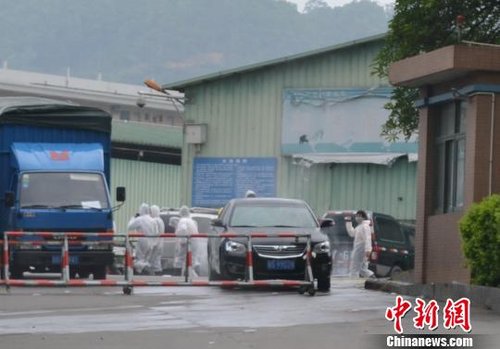No one has ever fully explained why, in 2002-3, the virulent pathogen known as Severe Acute Respiratory Syndrome (SARS) ran rampant in mainland China (5,328 cases, 349 deaths) but only infected four people in South Korea, with no fatalities, and none in Japan.
Unlike the time of the SARS outbreak, Chinese health authorities have been swift to go public with information on the recent spread of the H7N9 strain of avian influenza, sharing their findings with the World Health Organization.
What these experts had to say about H7N9 is hardly reassuring. “This is definitely one of the most lethal influenza viruses we have seen so far,” Keiji Fukuda, member of a WHO inspection team, said at a news conference in Beijing last Wednesday.
So the Japanese government, then, can hardly be faulted for proactive measures aimed at nipping a flu epidemic in the bud. By designating H7N9 as a quarantinable infectious disease the health ministry makes it possible to examine arrivals from overseas at airports and seaports, and isolate suspected cases.
But what will the health authorities do with the other passengers and crew members who may have also become infected while aboard the aircraft during their brief journey?
Shukan Jitsuwa (May 9-16) quotes an unnamed science writer as saying that human-to-human flu transmission appear to have occurred between members of the same families. In 60 percent of cases, the patients were believed to have had contact with poultry or birds, but the source of infection has not yet been identified.
“We can suppose the virus penetrates the human body via a variety of routes, such as the throat and nose,” says Tokyo-based physician Kiichi Inoue, who voiced skepticism over the low number of cases, and fatalities, announced so far by the Chinese government.
The decline in value of the Japanese yen by roughly 20 percent since late last year is likely to attract more Chinese visitors to Japan. “It’s just a matter of time until a tourist brings the virus into Japan,” Inoue predicts. Or just as likely, the virus might be carried by one of the hundreds of Japanese returning from abroad during the Golden Week period, which began yesterday.
The scary countdown, reports Shukan Shincho (April 25) is really a count-up — with the growing number of reported cases in China. Fourteen days from now, the magazine predicted, these numbers are likely to explode. Fourteen is the number of days it took from the time human-to-human transmission of the H5N1 swine flu began in 2009 until the number of reported cases reached 4,379 — pandemic proportions. If the rate follows the same exponential growth pattern — and since no vaccine will be available in Japan for at least six months — the bad news should hit the newsstands around the end of Golden Week.
How bad can things possibly get? Sunday Mainichi (April 28) spins out a worst-case scenario of how a flu pandemic would impact on Japan’s economy — perhaps spelling doom for the “Abenomics” policies upon which the nation has pinned hopes for economic recovery.
The article envisages a scenario in which Tokyo Gov. Naoki Inose would discourage residents from leaving their homes unless necessary. All grades of schools would be closed, and working hours would be dispersed to reduce crowding on public transportation. Baseball games at Tokyo Dome and events such as concerts would be postponed.
In the most extreme case, Tokyo’s 13 million residents would all be sent home and for two weeks — the incubation period of the current strain of flu — the capital might very well come to resemble a ghost town.
On March 25, the Japan Bar Association went on record as voicing concerns over the possibility that the government might “use an influenza pandemic as a pretext to prevent the freedom of assembly, which might lead to violations of human rights.”
Medical journalist Tatsuhito Sotoka told Sunday Mainichi that compared with the United States, Japan’s over-compartmentalized bureaucracy cannot be relied upon to issue data to reassure the public. The inevitable result is a situation called gotegote (too little, too late). A recent example was the repeated vague announcements (“We see no immediate danger”) made by chief cabinet secretary Yukio Edano immediately following the Fukushima nuclear accident in March 2011.
Writing in the Weekly Toyo Keizai (April 20), Shanghai-based correspondent Nobuhiko Tanaka took note of many Chinese people’s deep-seated distrust of their government. “Eating out in restaurants has declined sharply,” he writes. “Shanghainese are buying packaged vegetables, which they take home, scrub and heat up carefully. Their precautions are taking the form of vegetarianism.”
The total population of the provinces in China where outbreaks have occurred so far is over 200 million. And while knowledgeable people think an explosive spread of the disease is unlikely, the average citizen seems to be beset by apprehension.



